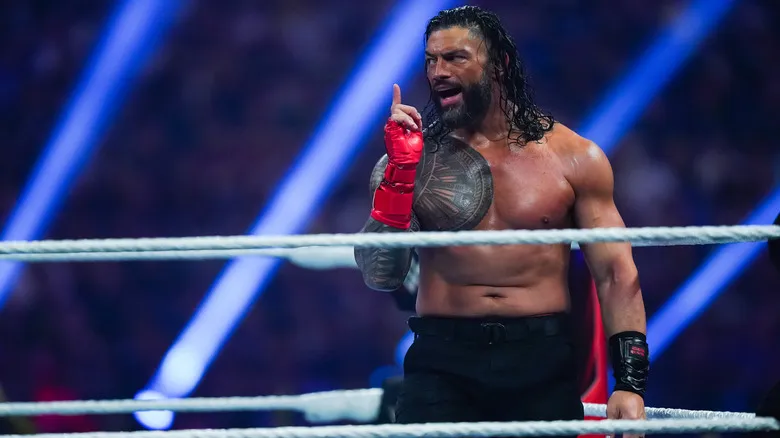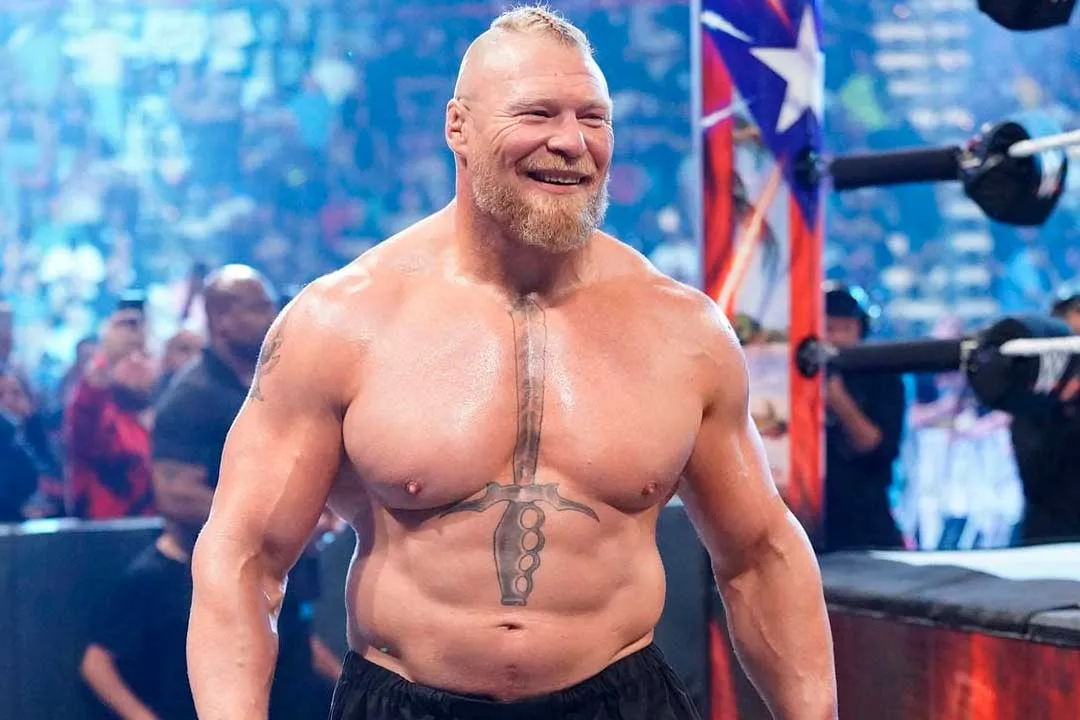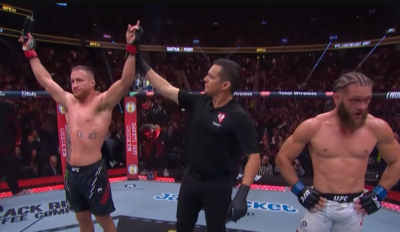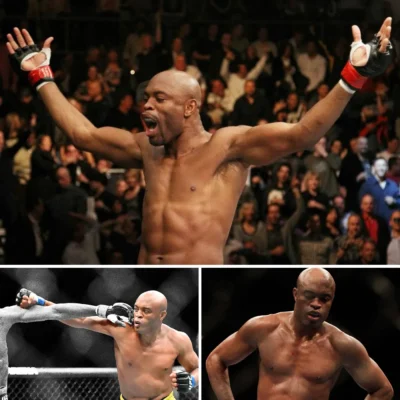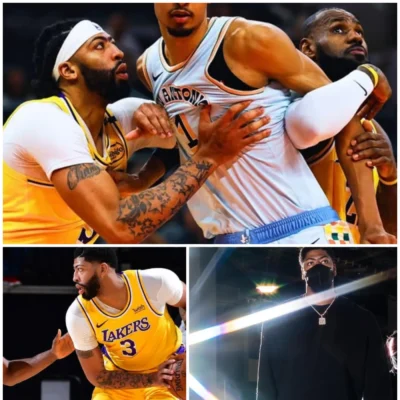
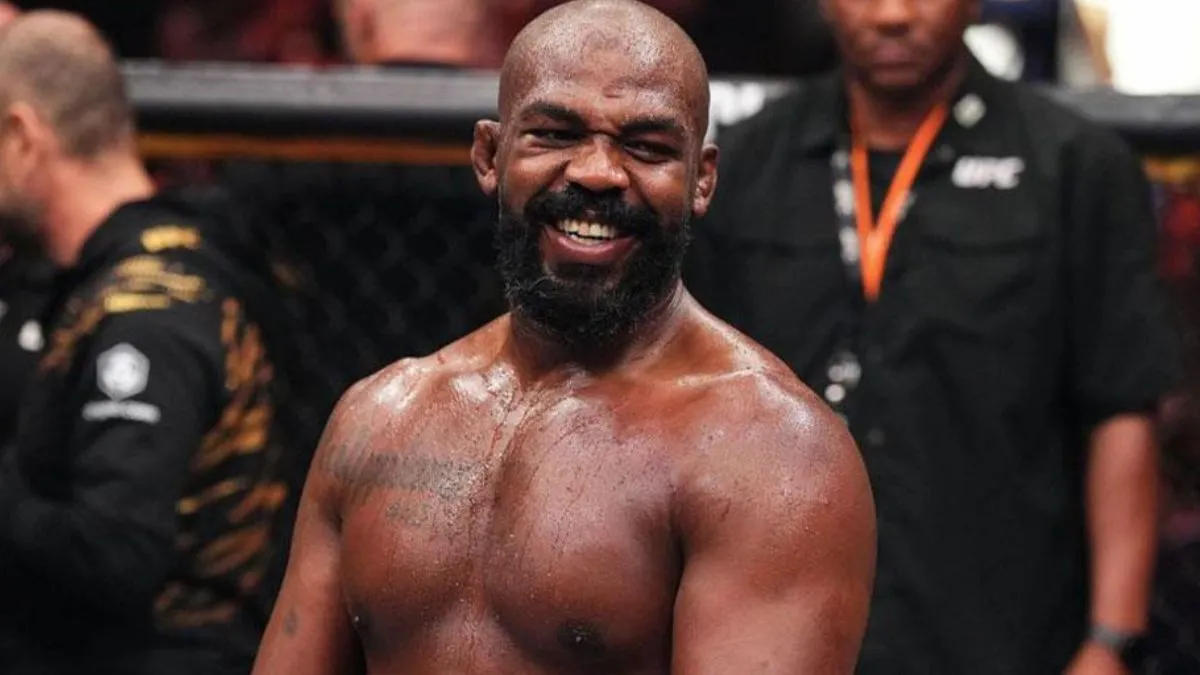
Former boxer Chael Sonnen, known for his predictions, recently made a blunt statement about an opponent who could make Jon Jones nervous when facing him.
The MMA community was sent into a frenzy when Chael Sonnen, former UFC fighter turned analyst, recently made a bold statement: Curtis Blaydes is the stylistic nightmare for Jon Jones. Known for his articulate insights and fearless predictions, Sonnen’s declaration has sparked debate among fans, analysts, and fighters alike. With the heavyweight division evolving rapidly, this revelation raises key questions: what makes Blaydes such a dangerous matchup, and how should Jones adapt if they ever meet inside the Octagon?
Jon Jones, a legendary figure in MMA, has built a career on versatility, striking precision, and incredible reach. But Sonnen’s analysis highlights that even the greatest fighters have stylistic kryptonites—fighters whose particular skill sets can disrupt, neutralize, and challenge dominant champions. In this article, we will explore Sonnen’s perspective, dissect Curtis Blaydes’ unique fighting attributes, examine Jon Jones’ potential vulnerabilities, and predict what a showdown between these two titans might entail.
Chael Sonnen’s Bold Statement – Blaydes as the True Threat
Chael Sonnen, renowned for his analytical commentary and no-nonsense opinions, recently highlighted Curtis Blaydes as the most challenging stylistic matchup for Jon Jones. Sonnen emphasized two main factors:
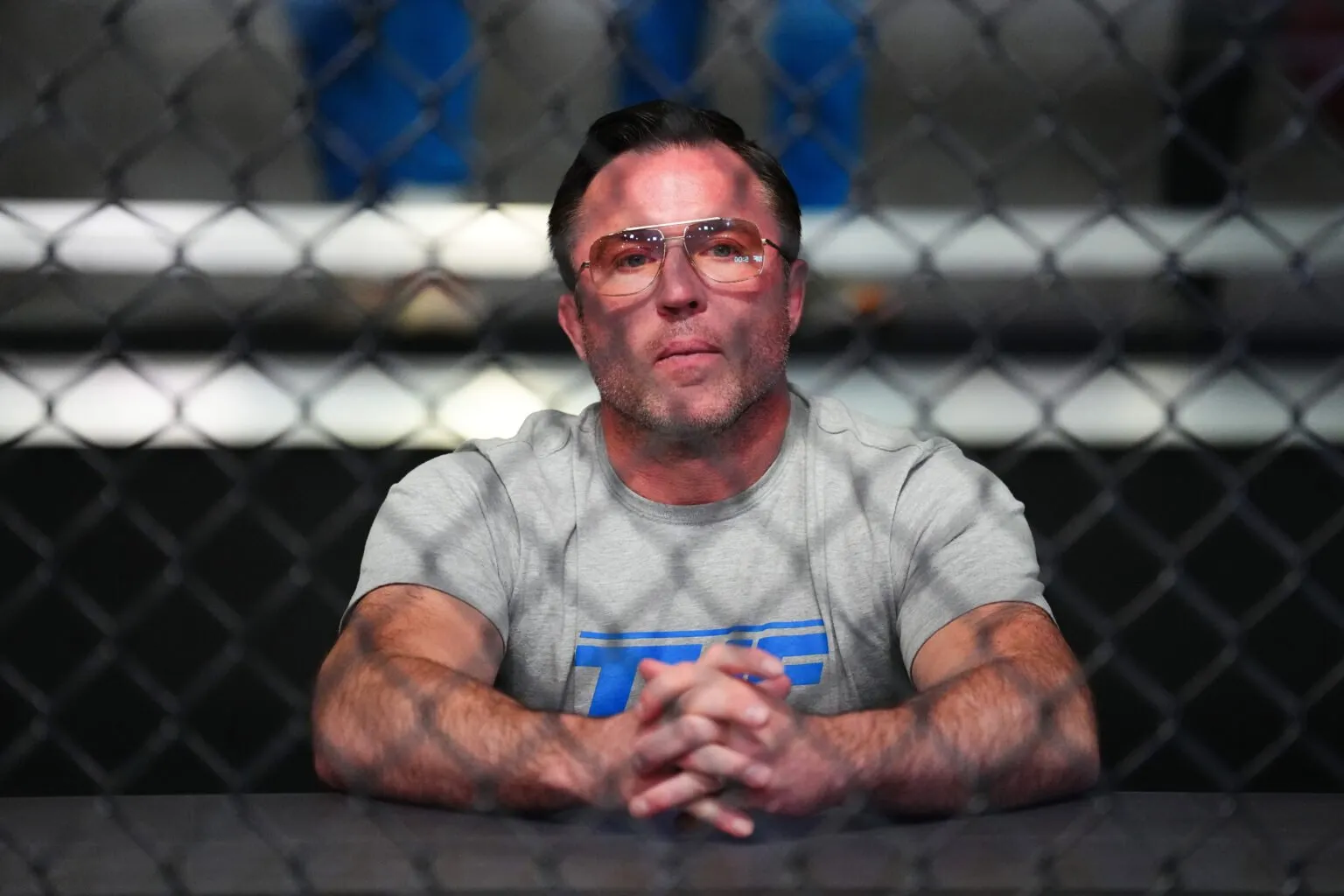
-
Exceptional Wrestling Ability – Blaydes is a highly skilled wrestler capable of controlling opponents on the ground, executing takedowns, and maintaining dominant positions.
-
Unrelenting Pressure – Unlike many fighters who pace themselves, Blaydes applies continuous forward pressure, forcing opponents to respond constantly and make split-second decisions under duress.
Sonnen’s point resonates deeply in MMA discussions: while Jones’ reach and striking prowess are formidable, relentless wrestling and cage control can neutralize a fighter’s striking advantage. The combination of Blaydes’ physicality and mental pressure creates a scenario that even a versatile athlete like Jon Jones must approach with caution.
Curtis Blaydes – Strengths That Make Fighters Wary
Technical Wrestling Excellence
Blaydes’ foundation lies in wrestling. From NCAA Division I experience to dominating in the UFC, he has consistently showcased a unique ability to close distance quickly, execute takedowns with precision, and control his opponent on the ground. Against Jon Jones, whose fight IQ allows him to adapt to striking threats, the wrestling aspect could present one of the most significant challenges in his career.
Explosive Power and Ground Control
In addition to his wrestling skills, Blaydes possesses explosive power capable of turning momentum within seconds. His ground-and-pound is relentless, designed to wear opponents down both physically and mentally. Sonnen emphasizes that Jones has never faced someone with this combination of technique, pressure, and raw physicality in the same fight.
Cage Control and Pressure Game
Blaydes’ ability to cut off the Octagon and pressure opponents into defensive positions is a hallmark of his style. Against a fighter like Jones, who thrives on distance management and reach advantage, this could force rare vulnerabilities, especially under prolonged engagement.
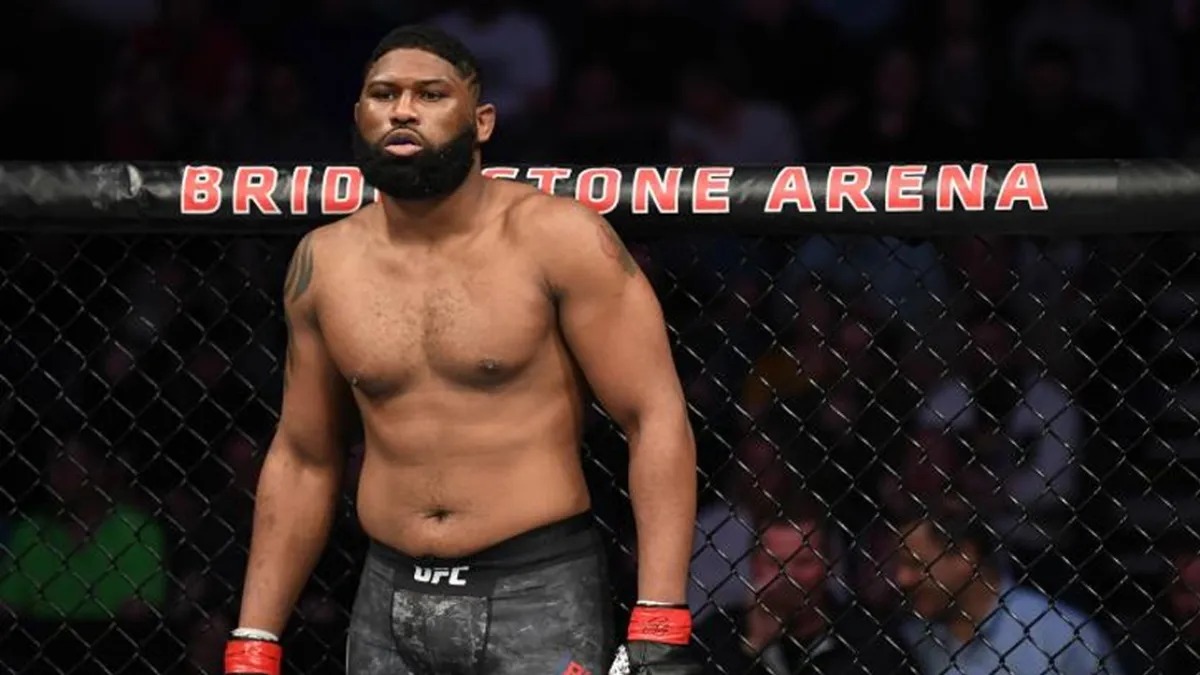
Jon Jones – The Champion With Few Weaknesses
Jon Jones’ MMA career is built on a combination of striking versatility, unparalleled reach, and strategic intelligence. His jab and oblique kicks have defined much of the light heavyweight and heavyweight scene. However, even legends face challenges against fighters with specific skill sets.
Defensive Wrestling Awareness
Jones is no stranger to wrestling threats. He has effectively defended takedowns and dominated opponents on the ground, showing resilience and adaptability. But Sonnen’s analysis suggests that Blaydes’ unique pressure style and ceaseless attacks may push Jones to the limits of his defensive skillset.
Reach Advantage vs. Pressure Fighter
Jones’ reach has always been a tactical asset, allowing him to strike from distance and maintain control of engagements. Yet, when facing an aggressive forward-moving wrestler like Blaydes, that advantage can be diminished. The moment Blaydes closes the distance, Jones must pivot quickly from striking to wrestling defense—a critical adjustment under high-pressure circumstances.
The Stylistic Matchup Breakdown
Chael Sonnen’s commentary isn’t just hype—it provides a blueprint for understanding why this matchup is particularly complex. Breaking down the fight into technical aspects:
-
Distance Management – Jones excels at striking from range, utilizing long limbs and timing. Blaydes thrives on closing distance, which could neutralize Jones’ offensive rhythm.
-
Ground Game Transition – Blaydes can force takedowns, potentially bringing Jones into prolonged grappling scenarios. Jones’ ability to scramble and defend is key.
-
Cardio and Pressure Handling – Continuous pressure from Blaydes tests Jones’ stamina and composure. Even minor mistakes could result in dangerous positions or momentum shifts.
-
Mental Warfare – Fighters like Blaydes often exert psychological pressure through persistent forward movement and aggression. Sonnen believes this could push Jones into reactive, less calculated fight decisions.
Potential Fight Scenarios – What Could Happen
Jones Adapts Early
If Jon Jones adapts early, using his reach advantage, lateral movement, and striking diversity, he could maintain distance and dictate the pace. However, Blaydes’ persistence may eventually close the gap, leading to a high-stakes battle where defensive wrestling becomes paramount.
Blaydes Overwhelms with Pressure
Should Blaydes implement relentless pressure from the start, Jones could struggle to establish rhythm. Sonnen highlights that constant forward pressure can force even elite fighters into mistakes, creating openings for takedowns or ground-and-pound opportunities.
Tactical Chess Match
Both fighters are highly intelligent. If Jones anticipates Blaydes’ tactics and counters effectively, we could see a strategic battle where distance, timing, and energy management dictate the winner. Sonnen points out that this is where the “stylistic nightmare” element emerges—Jones must adjust continuously against an opponent whose style is specifically challenging to his.
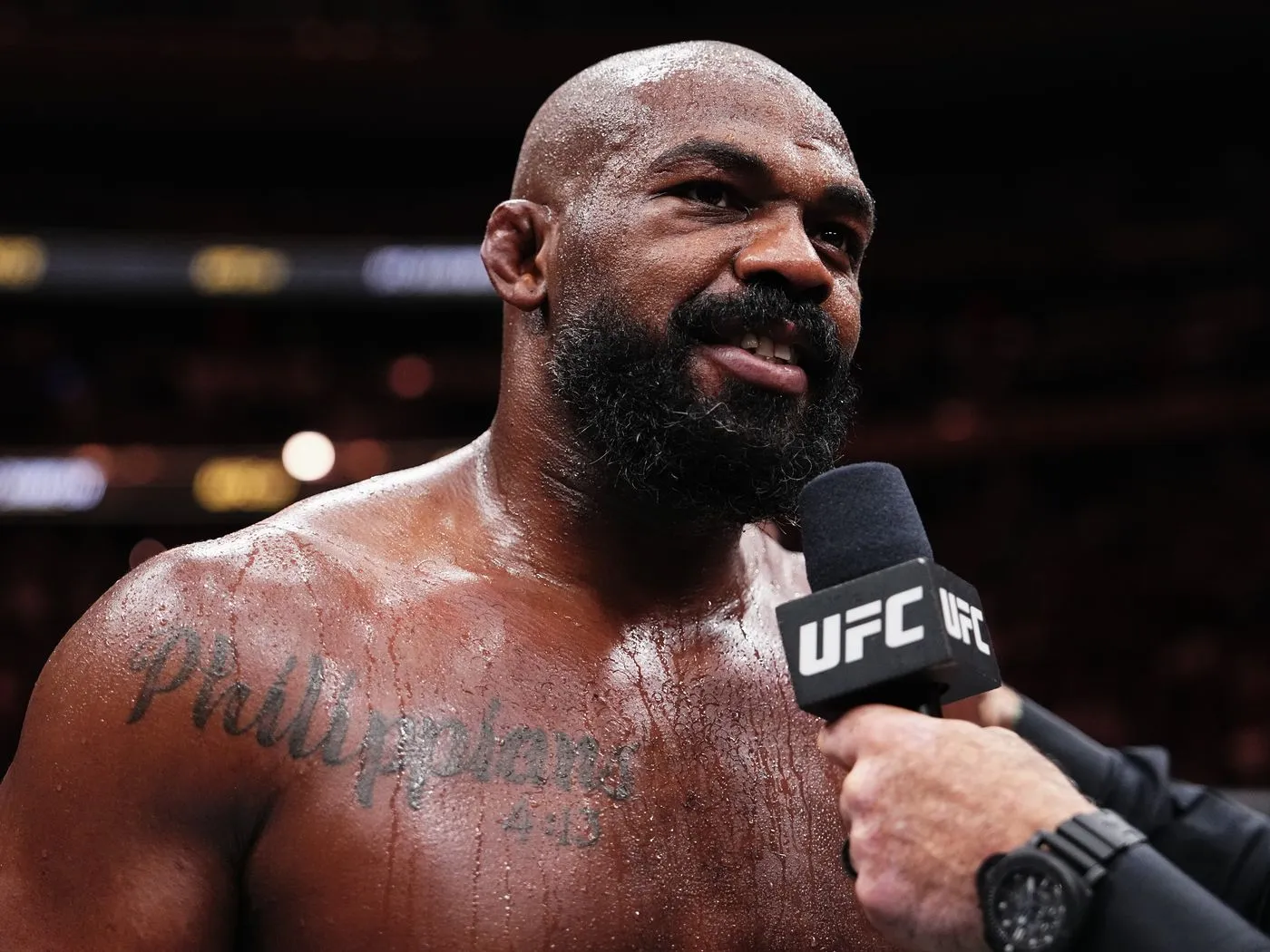
Implications for the Heavyweight Division
This potential clash has broader ramifications:
-
Title Contention – The winner immediately solidifies position as a legitimate title contender.
-
Legacy Considerations – Jones’ legendary status could be tested; a loss to Blaydes might tarnish an otherwise dominant record.
-
Fan Engagement – Such a matchup would draw massive attention, blending technical intrigue with high-stakes drama.
Fan Reactions and Community Buzz
The MMA fanbase is already buzzing with debate:
-
Some fans support Sonnen’s analysis, arguing that Blaydes’ wrestling dominance and pressure could indeed challenge Jones more than any other opponent.
-
Others are skeptical, insisting that Jones’ experience and versatility make him capable of overcoming any stylistic threat.
-
Social media is rife with speculation: “Could Blaydes really be the one to dethrone Jones?” or “Jon will adapt—it’s Jones’ specialty.”
Historical Context – Why Style Matters in MMA
MMA history shows that even the greatest fighters can be stylistically challenged:
-
Randy Couture vs. Brock Lesnar – A case where wrestling control neutralized size advantage.
-
Georges St-Pierre vs. Matt Serra – Highlighting that even dominant champions can fall if style mismatches are exploited.
-
Sonnen draws parallels to Jones vs. Blaydes, emphasizing that technical style matchups can outweigh raw talent in high-pressure scenarios.
Predictions and Expert Opinions
Experts largely agree with Sonnen’s assessment:
-
Wrestling-focused fighters can disrupt striking-dominant athletes.
-
Blaydes’ relentless pressure creates scenarios where Jones’ reaction time and adaptability are constantly tested.
-
Analysts caution that Jones’ mental game, adaptability, and fight intelligence remain his strongest defense, but no stylistic matchup is without risk.
Conclusion – A Stylistic Nightmare or Just Hype?
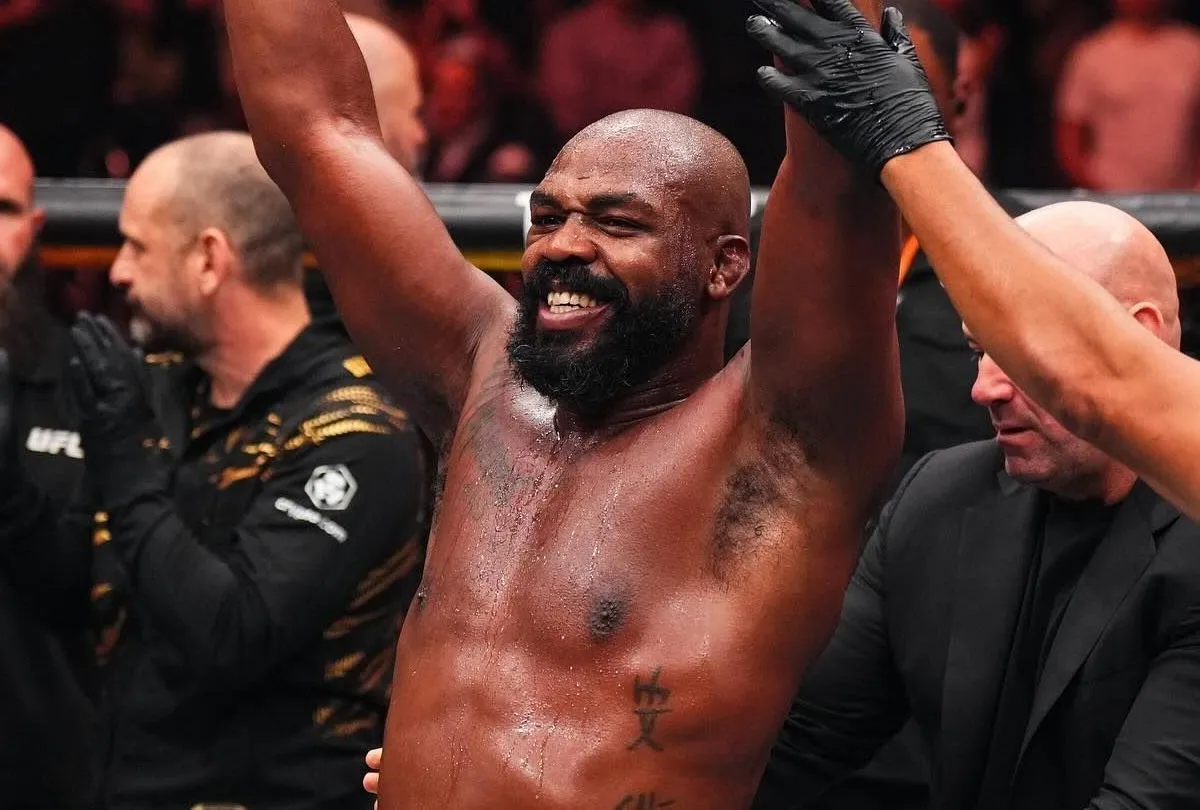
Chael Sonnen’s declaration that Curtis Blaydes represents Jon Jones’ toughest stylistic challenge shines a spotlight on the importance of matchups in MMA. While Jones’ skill, experience, and versatility remain unmatched, Blaydes’ unique combination of wrestling expertise and constant pressure presents a scenario that could truly test the champion.
For fans, analysts, and the MMA world, the implications are profound: this isn’t just about a potential fight—it’s about understanding how style, strategy, and pressure intersect in combat sports. Jones vs. Blaydes, if it happens, will be a battle not only of skill but of adaptation, resilience, and mental fortitude.
In the end, Sonnen’s insight reminds everyone that even the greatest champions must respect stylistic threats—and that the Octagon is as much a chessboard as it is a battlefield. The question remains: can Jon Jones navigate his toughest challenge yet, or will Curtis Blaydes prove to be the first to truly push the legend to his limits?








